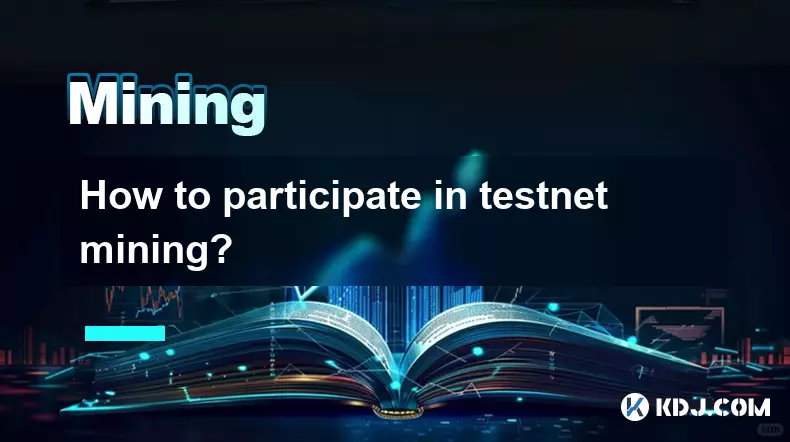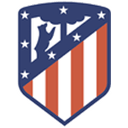-
 bitcoin
bitcoin $114779.865156 USD
2.30% -
 ethereum
ethereum $4226.519789 USD
2.39% -
 tether
tether $1.000545 USD
0.04% -
 xrp
xrp $2.890223 USD
0.92% -
 bnb
bnb $1030.029301 USD
2.95% -
 solana
solana $212.824944 USD
1.69% -
 usd-coin
usd-coin $0.999757 USD
0.01% -
 dogecoin
dogecoin $0.234961 USD
-0.27% -
 tron
tron $0.337174 USD
0.42% -
 cardano
cardano $0.804783 USD
0.09% -
 hyperliquid
hyperliquid $45.748770 USD
-2.85% -
 chainlink
chainlink $21.699170 USD
0.82% -
 ethena-usde
ethena-usde $1.001452 USD
0.08% -
 avalanche
avalanche $30.237800 USD
1.14% -
 stellar
stellar $0.372604 USD
1.52%
how to find bitcoin miner virus
Monitor your computer's CPU usage and power consumption, which can indicate the presence of Bitcoin miner viruses that consume significant resources, causing performance issues and potential data breaches.
Oct 22, 2024 at 10:53 pm

Bitcoin miner viruses are malware that secretly use your computer's resources to mine for cryptocurrencies, such as Bitcoin. This can lead to decreased computer performance, increased power consumption, and potential data breaches. Here's how to find and remove a Bitcoin miner virus from your computer:
1. Check for Unusual ActivitiesCPU Usage: Bitcoin miner viruses typically use a significant amount of CPU resources, resulting in slow computer performance and overheating. Monitor your CPU usage in Task Manager (or Activity Monitor on macOS) to identify any suspicious spikes.
Power Consumption: Mining cryptocurrencies consumes a lot of power. If your energy bills have suddenly increased, it could be a sign of a Bitcoin miner virus.
Data Breach: Bitcoin miner viruses may attempt to steal your wallet information or use your computer as part of a botnet for malicious activities. Keep an eye out for suspicious emails, phishing attempts, or unauthorized access to your financial accounts.
2. Use Antivirus SoftwareAntivirus programs like Bitdefender, Norton, and Avast can detect and remove Bitcoin miner viruses. Run a full system scan to identify any infected files or programs. Ensure that your antivirus software is up-to-date with the latest virus definitions.
3. Inspect Running ProcessesTask Manager (Windows): Press Ctrl + Shift + Esc to open Task Manager. Check if there are any unfamiliar processes running that are consuming high CPU or memory. Look for processes with names similar to "xmrig" or "minergate."
Activity Monitor (macOS): Press Command + Space to open Spotlight Search and type "Activity Monitor." Inspect the "CPU" and "Memory" tabs for any suspicious processes. Look for processes that are using a high percentage of resources without any legitimate reason.
4. Remove Infected FilesOnce you've identified the infected files or programs, delete them immediately. Use the antivirus software to quarantine or remove them. If you're not sure whether a file is infected, consult an IT professional.
5. Adjust Security SettingsDisable Auto-Run: Prevent malware from automatically running on your computer by disabling the auto-run feature. In Windows, open Registry Editor and navigate to HKEY_LOCAL_MACHINE\SOFTWARE\Microsoft\Windows\CurrentVersion\Policies\Explorer. Create a new DWORD (32-bit) value named "NoDriveTypeAutorun" and set its value to "ff."
Enable File Extensions: In Windows, ensure that file extensions are enabled so you can easily identify suspicious files. Go to Control Panel > Folder Options > View and uncheck "Hide extensions for known file types."
6. Reset Browser SettingsBitcoin miner viruses may also infect your web browser to generate revenue. Reset your browser settings to default to remove any malicious extensions or plugins.
7. Keep Your Software UpdatedRegularly update your operating system, software, and antivirus programs to patch security vulnerabilities that could be exploited by Bitcoin miner viruses. Enable automatic updates to ensure timely protection.
8. Improve Security PracticesAvoid Suspicious Websites and Emails: Don't visit untrusted websites or click on suspicious email links that may contain malware.
Use Strong Passwords: Create strong and unique passwords for your accounts to prevent unauthorized access.
Use a VPN: While not a foolproof measure, using a VPN can help protect your privacy and block malicious websites.
By following these steps, you can find and remove Bitcoin miner viruses from your computer effectively. Remember to be vigilant, maintain good security practices, and seek professional help if needed.
Disclaimer:info@kdj.com
The information provided is not trading advice. kdj.com does not assume any responsibility for any investments made based on the information provided in this article. Cryptocurrencies are highly volatile and it is highly recommended that you invest with caution after thorough research!
If you believe that the content used on this website infringes your copyright, please contact us immediately (info@kdj.com) and we will delete it promptly.
- Altcoins Primed for 100x Gains: Cryptocurrencies to Watch
- 2025-09-30 22:45:16
- Debut Auction & XRP ETF Watch: October 18th Auction Set, Crypto's Big Day?
- 2025-09-30 22:45:16
- Navigating Solana Wallets: Your Guide to Secure Crypto in 2025
- 2025-09-30 22:50:11
- BlockchainFX, Crypto & Hyperliquid: Decoding the Future of DeFi in 2025
- 2025-09-30 22:25:13
- Visa's Stablecoin Payout Pilot: Revolutionizing Cross-Border Payments
- 2025-09-30 22:25:13
- Crypto Launchpads: Revolutionizing Blockchain Fundraising for 2025 and Beyond
- 2025-09-30 22:30:13
Related knowledge

The difference between staking and mining
Sep 24,2025 at 05:18am
Understanding Staking in the Cryptocurrency Ecosystem1. Staking involves holding funds in a cryptocurrency wallet to support the operations of a block...

How to participate in testnet mining?
Sep 22,2025 at 09:18am
Understanding Testnet Mining in the Crypto Ecosystem1. Testnet mining is a method used by blockchain developers to simulate real-world conditions on a...

How to dispose of abandoned mining machines?
Sep 19,2025 at 08:19pm
Assessing the Condition of Abandoned Mining Rigs1. Begin by inspecting each mining machine for visible damage, corrosion, or missing components. Machi...

How to identify high-quality mining pools?
Sep 21,2025 at 03:19pm
Reputation and Track Record1. A mining pool’s reputation is built over time through consistent performance and transparency. Pools that have operated ...

Advantages of decentralized mining pools
Sep 20,2025 at 04:36pm
Enhanced Security and Resistance to Censorship1. Decentralized mining pools operate on blockchain-based smart contracts, eliminating the need for a ce...

What is mining machine overclocking?
Sep 21,2025 at 07:19pm
Understanding Mining Machine Overclocking1. Mining machine overclocking refers to the process of increasing the operating frequency of a cryptocurrenc...

The difference between staking and mining
Sep 24,2025 at 05:18am
Understanding Staking in the Cryptocurrency Ecosystem1. Staking involves holding funds in a cryptocurrency wallet to support the operations of a block...

How to participate in testnet mining?
Sep 22,2025 at 09:18am
Understanding Testnet Mining in the Crypto Ecosystem1. Testnet mining is a method used by blockchain developers to simulate real-world conditions on a...

How to dispose of abandoned mining machines?
Sep 19,2025 at 08:19pm
Assessing the Condition of Abandoned Mining Rigs1. Begin by inspecting each mining machine for visible damage, corrosion, or missing components. Machi...

How to identify high-quality mining pools?
Sep 21,2025 at 03:19pm
Reputation and Track Record1. A mining pool’s reputation is built over time through consistent performance and transparency. Pools that have operated ...

Advantages of decentralized mining pools
Sep 20,2025 at 04:36pm
Enhanced Security and Resistance to Censorship1. Decentralized mining pools operate on blockchain-based smart contracts, eliminating the need for a ce...

What is mining machine overclocking?
Sep 21,2025 at 07:19pm
Understanding Mining Machine Overclocking1. Mining machine overclocking refers to the process of increasing the operating frequency of a cryptocurrenc...
See all articles










































































